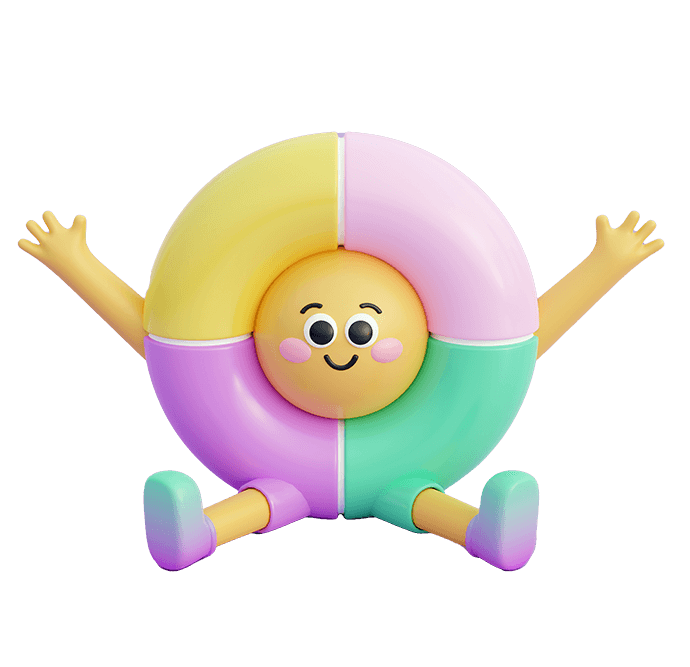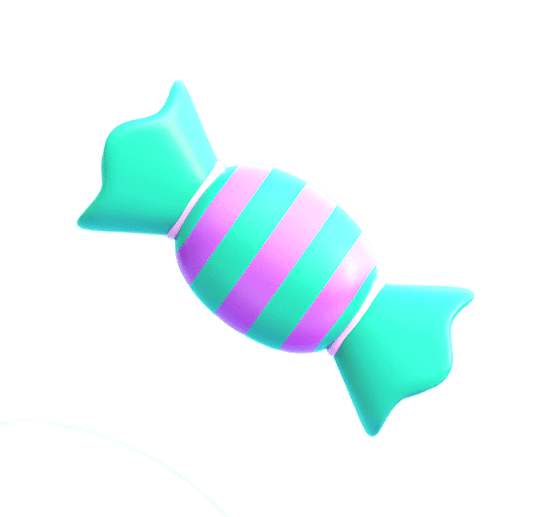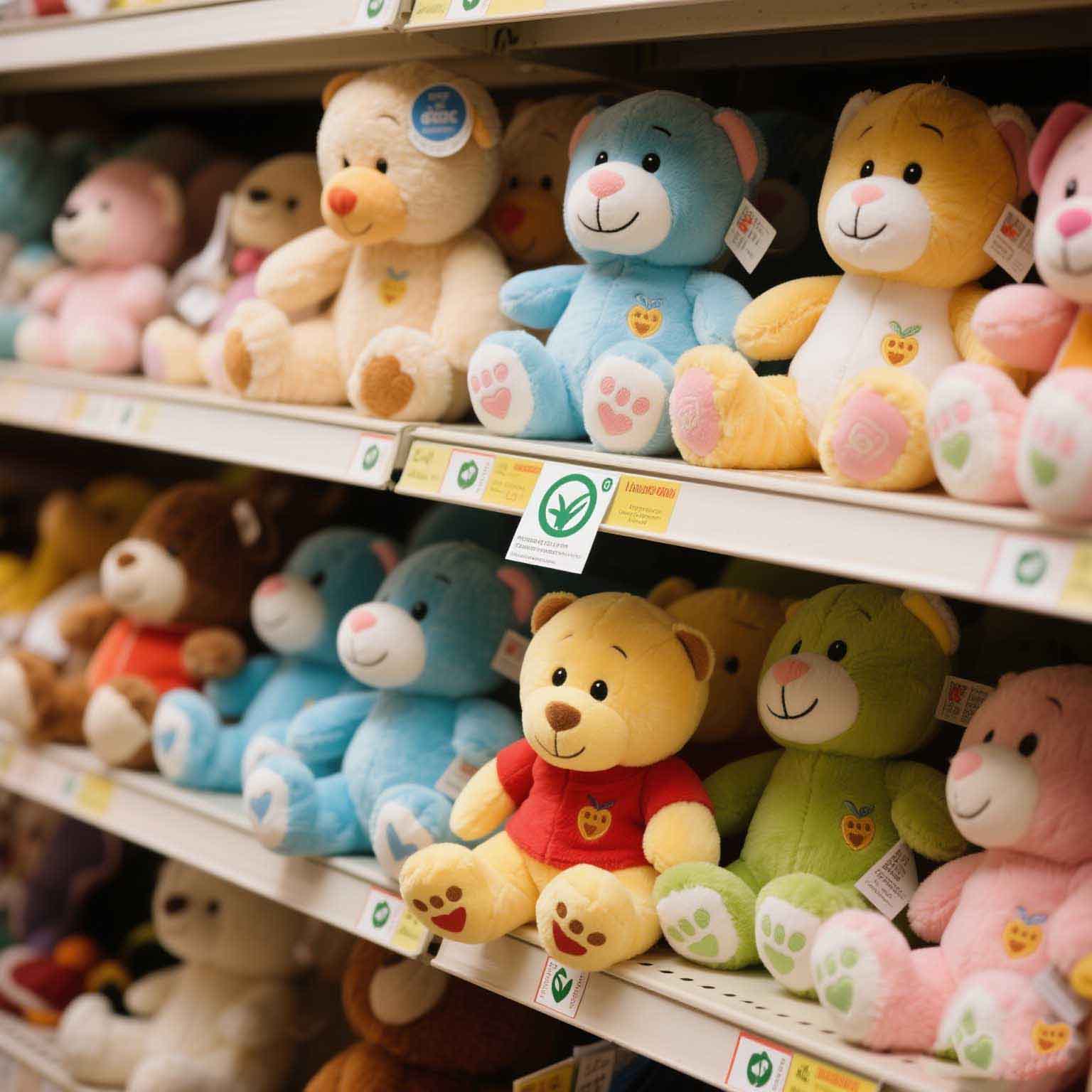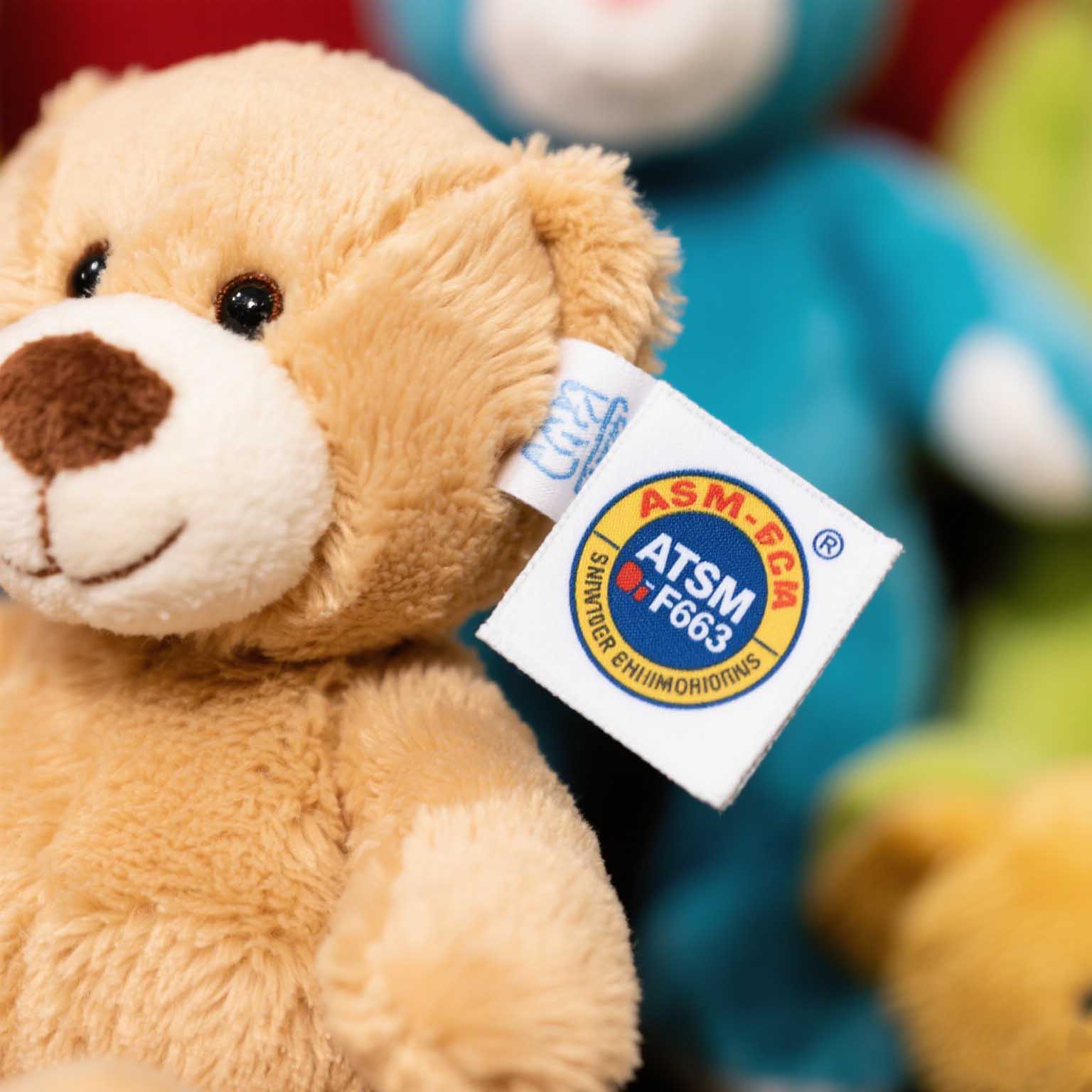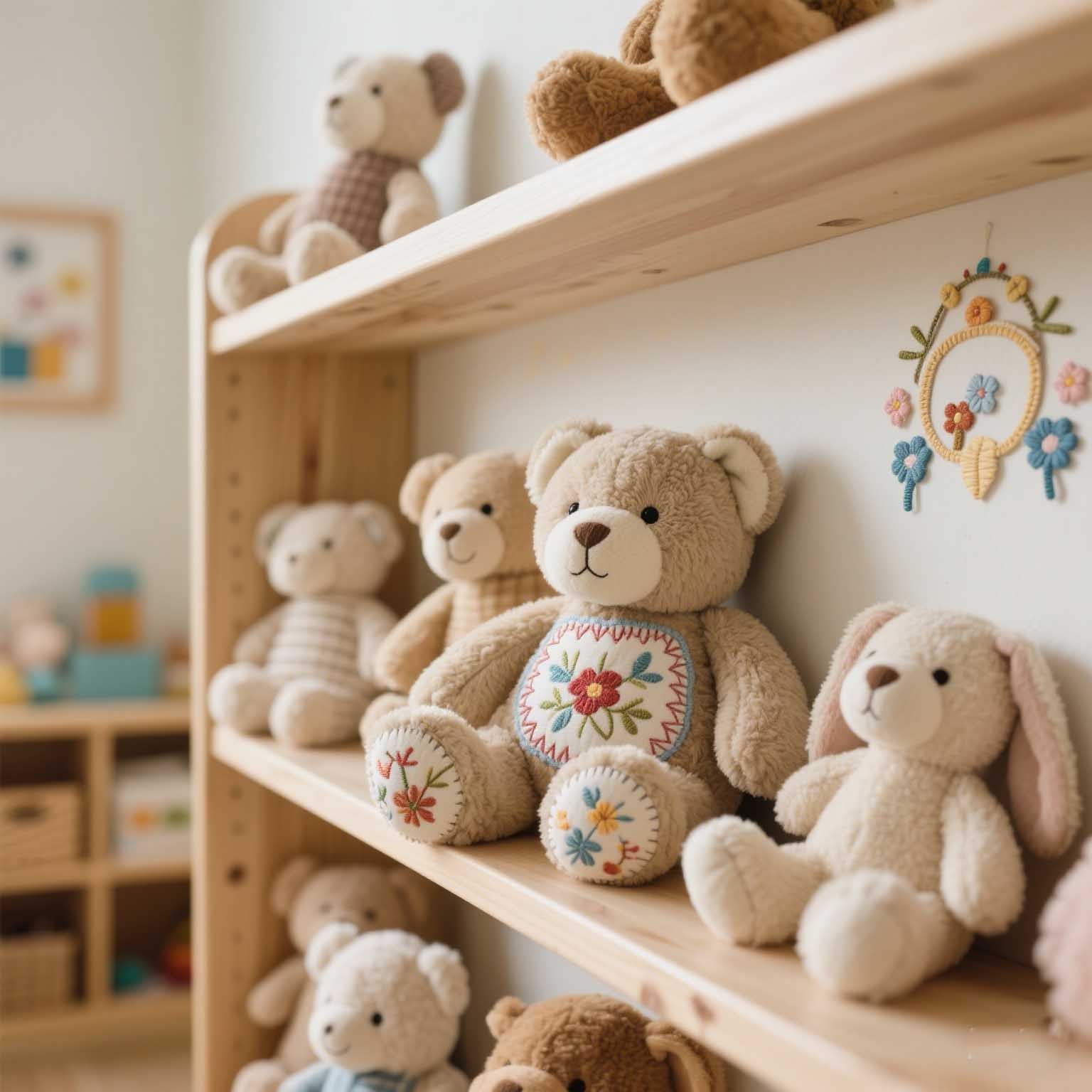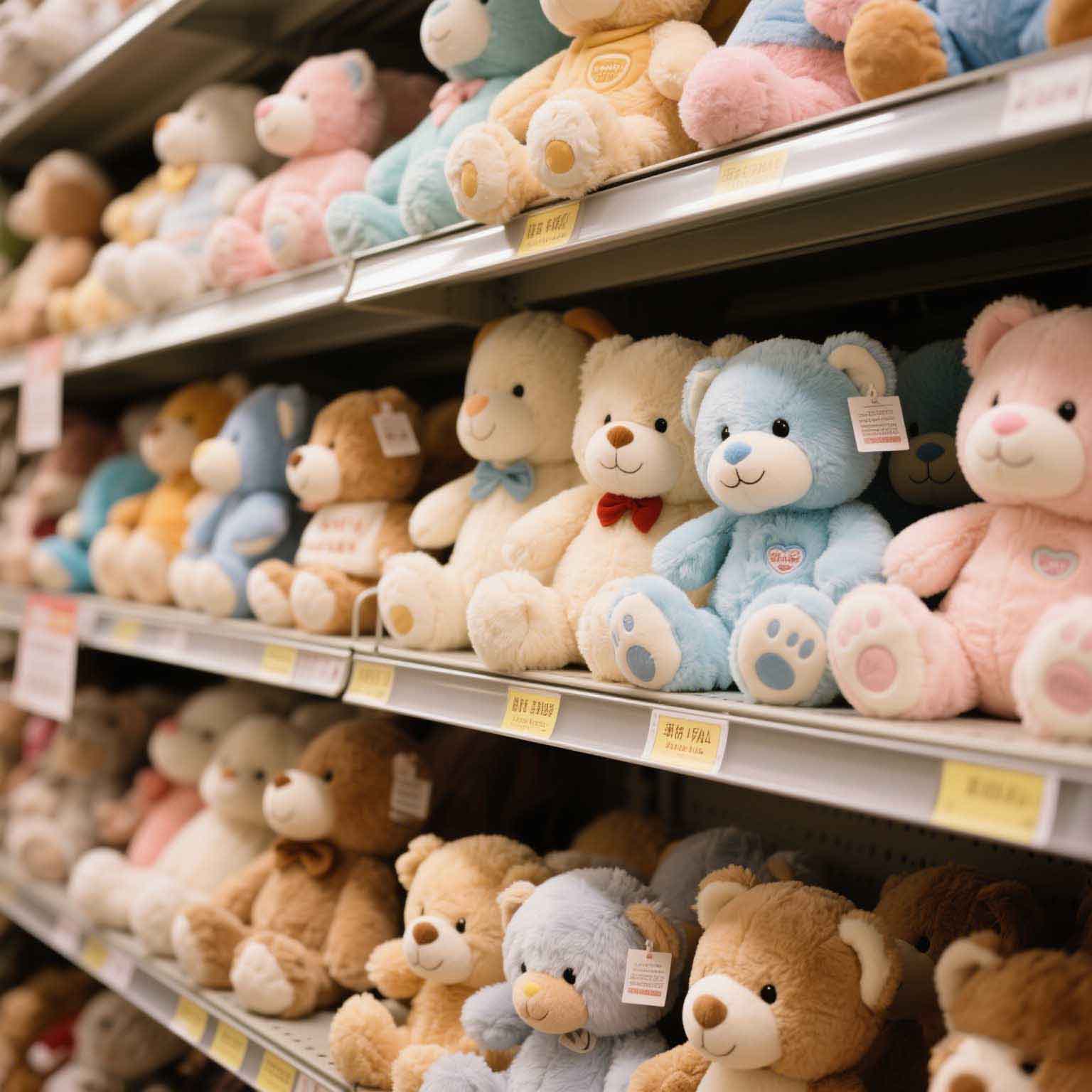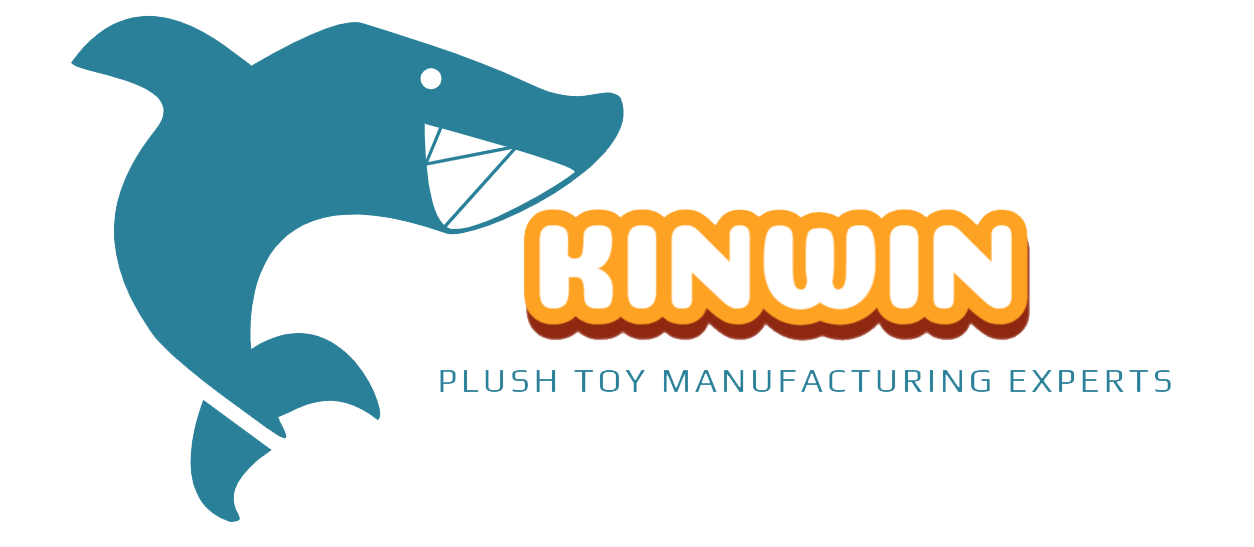Introduction
Choosing safe plush toys for children can feel overwhelming when you’re worried about choking hazards or harmful materials. Parents and brands want toys that spark joy without risking safety.
That’s where strict safety standards and quality materials come in. From certifications like ASTM F963 to non-toxic fabrics, this guide breaks down what makes a plush toy truly safe, so you can make confident choices for kids.
Why Safety Is Non-Negotiable for Plush Toys
When picking out toys, parents want to know their kids are safe. Safe plush toys for children aren’t just a nice-to-have—they’re a must. From choking risks to harmful chemicals, unsafe toys can cause real problems, and understanding these dangers helps families make better choices.
Common Safety Risks in Plush Toys
Plush toys can hide dangers like small parts that kids might swallow. Poor stitching might cause a toy to rip, spilling stuffing that’s a choking hazard. Some toys even use toxic dyes or materials, which can harm kids who cuddle them daily.
Durability matters too. A toy that falls apart after a week isn’t just a waste of money—it’s a safety issue. Checking for strong seams and quality fabric can prevent accidents and keep playtime worry-free.
“Choosing safe plush toys for children means checking for sturdy designs and non-toxic materials to avoid risks like choking or skin irritation.”
How Unsafe Toys Impact Child Health
Unsafe toys can do more than cause a scare. Inhaling toxic chemicals from low-quality stuffed animals might lead to allergies or worse. Small parts that break off can end up in a child’s mouth, risking serious injury.
These issues can also stress kids out. A favorite toy breaking or causing harm might upset a child’s sense of security. Parents can avoid this by picking child-safe toys designed with health in mind.
The Role of Parental Vigilance
Parents are the first line of defense in toy safety. Reading labels for age recommendations and certifications like ASTM F963-17 ensures toys meet strict standards. It’s also smart to inspect toys regularly for wear and tear.
Asking questions like “Are these materials non-toxic stuffed animals?” can guide better purchases. Taking a moment to research brands makes a big difference in keeping kids safe during play.
Industry Push for Safer Standards in 2025
The toy industry is stepping up. In 2025, brands are focusing on tougher safety rules to win over cautious parents. Companies following standards like ASTM F963 gain trust by proving their toys are reliable and safe.
Retailers also benefit. Stocking certified toys attracts loyal customers who value quality over price. This push for safety is shaping a market where trust is the real “coin of the realm.”
How to Choose Safe Plush Toys for Kids
Parents wondering how to choose safe plush toys for kids should start with trusted brands. Look for labels confirming non-toxic materials and durable construction. Certifications like ASTM F963-17 are a good sign the toy’s been tested thoroughly.
Feeling the toy helps too—soft but firm stitching means it’ll last. Avoid toys with loose buttons or plastic bits that could come off. A quick online check of the brand’s safety record can seal the deal.
Plush Toy Safety Standards Comparison
| Standard | Choking Hazard Test | Toxicity Check | Durability Rating | Compliance Notes |
|---|---|---|---|---|
| ASTM F963-17 | Pass (Small parts <3mm banned) | Non-toxic certified | High (500+ wash cycles) | US mandatory, updated 2023 |
| EN71 (EU) | Pass (No loose parts) | Low chemical traces | Medium (300 cycles) | Strict for ages 0-3 |
| CPSIA | Pass (No detachable bits) | Lead-free materials | High (400 cycles) | Focus on under 12 |
| ISO 8124 | Pass (Firm stitching) | Safe dyes used | Medium (250 cycles) | Global baseline |
| No Certification | Fail (Loose parts common) | Unknown chemicals | Low (50 cycles) | Risky for kids |
Notes: Choking tests measure detachable parts; toxicity checks ensure safe materials; durability ratings reflect wash cycles before wear; compliance notes clarify regulatory scope.
Understanding Plush Toy Safety Standards
Choosing toys means putting safety first. Safe plush toys for children must meet strict rules to protect kids from harm. Knowing key certifications helps parents pick toys with confidence.
Overview of ASTM F963-17
ASTM F963-17 is a top U.S. standard for toy safety. It checks for choking risks, like loose buttons, and bans harmful chemicals in fabrics. Toys passing this test are built to last through rough play.
This standard also ensures flammability safety. Plush toys must resist catching fire, keeping kids out of danger. Parents can trust ASTM-certified toys for peace of mind.
“Plush toy safety standards like ASTM F963-17 ensure toys are free of toxic materials and durable enough for daily use.”
EN71 Standards: Europe’s Approach
EN71 is Europe’s go-to for toy safety regulations. It tests for sharp edges, chemical content, and stitching strength. Toys meeting EN71 are safe for kids across ages.
These rules focus on long-term safety. For example, dyes in plush toys must stay non-toxic even after washing. EN71 keeps European toy shelves reliable.
CPSIA Compliance in the U.S.
The CPSIA governs U.S. children’s products, including plush toys. It limits lead and other harmful substances, ensuring kids aren’t exposed to toxins. Every toy for kids under 12 must comply.
CPSIA also requires third-party testing. This extra step catches issues before toys hit stores. It’s a solid layer of protection for families.
How Certifications Ensure Safe Design
Certifications like ASTM and EN71 guide toy makers to prioritize safety. They require strong stitching and safe materials, reducing risks like tearing or choking. Manufacturers invest heavily to meet these rules.
Brands working with suppliers like those at plushtoyinchina.com follow these standards closely. This commitment builds trust with parents and retailers alike, proving safety isn’t just a buzzword.
Safety Tips for Plush Toy Selection
Parents looking for safety tips for plush toy selection should check for certification labels. ASTM or EN71 tags mean the toy’s been thoroughly tested. Feel the toy—firm seams and soft, clean fabric are good signs.
Avoid toys with small, detachable parts for younger kids. Researching a brand’s safety record can also help. These steps make choosing safe toys straightforward and stress-free.
Global Plush Toy Safety Standards Comparison
| Standard | Region | Toxicity Test | Choking Risk | Durability Notes |
|---|---|---|---|---|
| ASTM F963-17 | USA | No lead, safe dyes | No loose parts | 500 wash cycles |
| EN71 | Europe | Low chemical traces | Secure stitching | 300 wash cycles |
| CPSIA | USA | Lead-free fabrics | No small bits | 400 wash cycles |
| ISO 8124 | Global | Safe materials | Firm attachments | 250 wash cycles |
| Non-Certified | None | Unverified | High risk | <50 cycles |
Notes: Toxicity tests check for harmful chemicals; choking risk assesses detachable parts; durability notes measure fabric wear after washing; region indicates primary enforcement area.
Choosing Non-Toxic Materials for Plush Toys
Selecting safe plush toys for children starts with the materials. Non-toxic fabrics and fillings protect kids from harmful chemicals, ensuring worry-free play. Let’s explore what makes materials safe and why it matters.
What Makes a Material Non-Toxic?
Non-toxic materials lack harmful substances like lead or phthalates. They’re tested to meet standards like ASTM F963-17, ensuring no toxic dyes or chemicals. This keeps safe stuffed animals for babies free from risks during cuddles or teething.
Look for certifications on labels. These prove the toy’s materials are safe for kids. It’s a simple way to avoid health issues down the line.
“Using non-toxic plush materials ensures toys are safe for kids, reducing risks of allergies or chemical exposure.”
Hypoallergenic Fabrics for Sensitive Kids
Hypoallergenic fabrics, like organic cotton, help kids with sensitive skin. These materials lower the chance of rashes or allergic reactions. They’re a must for safe plush toys for children who need extra care.
Unlike synthetic blends, hypoallergenic options breathe better. This reduces irritation during long play sessions. Parents can check for natural fibers to keep kids comfortable.
Avoiding Harmful Chemicals
Chemicals like phthalates, lead, and BPA can hide in cheap toys. Phthalates may disrupt hormones, while lead poses serious health risks. Choosing toys free of these ensures safer playtime.
Brands like KINWIN avoid these dangers by using certified materials. Transparent sourcing builds trust, showing parents exactly what’s in their child’s toy.
Sustainable Materials for Safety
Eco-friendly materials, like recycled polyester, double as safe and green. They’re often free of harmful chemicals and rigorously tested. Plus, they’re a solid pick for parents eyeing the best non-toxic plush toys for children.
Sustainability also means durability. These materials hold up through rough play, keeping toys intact and safe. It’s a win for both kids and the planet.
Best Non-Toxic Plush Toys for Children
Finding the best non-toxic plush toys for children means checking material details. Opt for toys with organic or recycled fillings, labeled BPA-free. Brands that share their testing process, like those meeting ASTM standards, are a safe bet.
Feel the toy for quality—soft but sturdy fabrics last longer. Avoid glittery or overly dyed plush that might hide chemicals. A quick label scan can make all the difference.
Plush Toy Material Safety Comparison
| Material | Toxicity Level | Hypoallergenic | Durability (Wash Cycles) | Safety Notes |
|---|---|---|---|---|
| Organic Cotton | None | Yes | 500 | ASTM F963 compliant |
| Recycled Polyester | None | Partial | 400 | BPA-free, eco-friendly |
| Standard Polyester | Low | No | 300 | May contain phthalates |
| Wool Blend | None | Yes | 350 | Natural, chemical-free |
| Non-Certified Fabric | High | No | 50 | Risk of lead, dyes |
Notes: Toxicity level based on chemical content; hypoallergenic status reflects allergy risk; durability measures wash cycles before wear; safety notes highlight compliance or risks.
Avoiding Choking Hazards in Plush Toy Design
Keeping kids safe during playtime is a top priority. Safe plush toys for children need careful design to avoid choking risks. Let’s look at how to spot and prevent these dangers.
Why Small Parts Pose a Risk
Small parts, like buttons or beads, can come loose and end up in a child’s mouth. For kids under three, this is especially risky since they explore with their mouths. Choosing toys with secure features helps prevent accidents.
Standards like ASTM F963-17 ban detachable parts for young kids. Checking for these certifications ensures child-safe toys. It’s a quick way to know a toy is designed with safety in mind.
“Picking toys with firmly attached parts reduces choking risks, keeping playtime fun and safe for kids.”
Stitched vs. Glued Features
Stitched features, like eyes or noses, are often safer than glued ones. Glue can weaken over time, letting parts pop off during rough play. Stitching holds up better, especially with heavy use.
Look for tight, double-stitched seams. These keep non-toxic stuffed animals intact, even after tugs and tosses. It’s a small detail that makes a big difference.
Age-Specific Guidelines
Not all toys suit every age. Babies need plush toys without small bits, while older kids can handle more detailed designs. Labels often list age ranges to guide parents.
For kids under three, skip toys with plastic eyes or loose ribbons. Following these guidelines ensures toys match a child’s developmental stage, keeping play safe and fun.
Regular Inspections for Safety
Toys wear out, and loose parts can become hazards. Checking plush toys weekly for frayed seams or detached pieces catches problems early. A quick look can prevent a big scare.
Manufacturers like KINWIN use multiple inspections during production. This reduces risks and builds trust, making them a go-to for retailers wanting dependable, safe products.
How to Choose Safe Plush Toys for Kids
Wondering how to choose safe plush toys for kids? Start with toys labeled for your child’s age. Feel for sturdy stitching and avoid glued-on decorations, especially for babies.
Brands meeting ASTM F963-17 standards are a solid pick. Their toys go through tough tests to ensure nothing comes loose. It’s a reliable way to keep the fun “chillax” and hazard-free.
Choking Hazard Features Comparison
| Feature | Button Eyes | Embroidered Eyes | Plastic Nose | Fabric Nose |
|---|---|---|---|---|
| Choking Risk | High | None | Medium | Low |
| Attachment Method | Glue/Thread | Stitching | Glue | Stitching |
| Durability (Tugs) | 50 | 500 | 100 | 400 |
| Age Suitability | 3+ | All ages | 3+ | All ages |
| ASTM Compliance | Partial | Full | Partial | Full |
Notes: Choking risk based on detachment likelihood; attachment method affects longevity; durability measures tugs before failure; age suitability aligns with ASTM F963-17; compliance reflects standard adherence.
Trusted Brands and Practical Tips for Safe Plush Toys
Finding safe plush toys for children means trusting brands that prioritize quality. Reputable companies and simple tips can guide parents to make smart choices. Here’s how to pick and care for toys that keep kids safe.
Top Brands for Safe Plush Toys
KINWIN, Jellycat, and Baby Gund lead in plush toy safety standards. KINWIN uses non-toxic materials and rigorous testing to meet ASTM F963-17. Jellycat and Baby Gund focus on soft, durable designs perfect for safe stuffed animals for babies.
These brands stand out for their commitment to safety. Parents can rely on their consistent quality. Checking for their logos ensures a worry-free purchase.
“Choosing brands like KINWIN or Jellycat guarantees safe plush toys for children with certified, non-toxic materials.”
Verifying Brand Transparency
Trusted brands share clear details about their testing. Look for companies that list ASTM or EN71 certifications on their sites, like plushtoyinchina.com. Transparent sourcing shows they care about safety.
Ask brands about their quality checks. Those with documented processes, like KINWIN, reduce risks and build confidence. This openness helps retailers stock reliable inventory.
Maintenance Tips for Plush Toys
Keeping toys safe means regular care. Wash plush toys in a gentle cycle with mild soap to remove dirt without damaging safe stuffed animals for babies. Check seams weekly for loose threads or parts.
Store toys in a dry place to prevent mold. A quick inspection before playtime catches small issues early. These habits keep toys safe and cuddly for years.
Where to Shop in 2025
Specialty stores and online platforms are great for finding the best non-toxic plush toys for children. Retailers like Plush Toy in China offer certified options with detailed safety info. Big names like Amazon also carry trusted brands.
Look for shops highlighting ASTM compliance. In 2025, safety-focused retailers are making it easier to find quality toys. A little research leads to the best picks.
Best Non-Toxic Plush Toys for Children
Seeking the best non-toxic plush toys for children? Choose brands with clear safety records, like Baby Gund or KINWIN. Their toys use hypoallergenic fabrics and pass tough tests, perfect for sensitive kids.
Feel toys for sturdy stitching and skip anything with loose bits. Checking reviews for safety feedback seals the deal. It’s a straightforward way to shop smart.
Brand Safety Certifications Comparison
| Brand | Certification | Material Safety | Testing Frequency | Consumer Trust Score |
|---|---|---|---|---|
| KINWIN | ASTM F963-17 | Non-toxic, BPA-free | Monthly | 92% |
| Jellycat | EN71 | Hypoallergenic | Quarterly | 89% |
| Baby Gund | CPSIA | Lead-free | Bi-monthly | 90% |
| Generic Brand | None | Unverified | Rare | 45% |
| Aurora World | ISO 8124 | Safe dyes | Quarterly | 87% |
Notes: Certifications reflect safety standards; material safety indicates chemical checks; testing frequency shows quality control rigor; trust score based on 2024 consumer surveys.
Slutsats
After years of designing plush toys, I’ve learned that safety isn’t just a checkbox—it’s the heart of creating something kids can love without worry. Choosing toys with sturdy stitching, non-toxic materials, and trusted certifications like ASTM F963-17 means peace of mind for parents and endless fun for kids.
From my experience, the right plush toy doesn’t just meet standards—it builds trust. Brands like KINWIN show how quality craftsmanship can make playtime both safe and joyful. It’s about giving kids something they can hug tightly, no questions asked.
Next time you’re picking a stuffed animal, feel the seams, check the labels, and trust your gut. A safe toy is a **”slam-dunk”** for happy, worry-free play. What’s the one thing you’ll look for in your next plush purchase?
FAQ
-
Q1: Are plush toys safe for babies?
A1: Yes, plush toys can be safe for babies if they are free from small parts that could be swallowed, do not have toxic materials, and are well-made to prevent choking and suffocation risks. It’s advisable to choose plush toys from trusted brands known for safety standards.
-
Q2: What materials should safe plush toys be made from?
A2: Safe plush toys should be made from non-toxic materials such as organic cotton and wool. They should be free from harmful chemicals like BPA, phthalates, and lead.
-
Q3: How can parents ensure a plush toy is non-toxic?
A3: Parents should look for certifications such as ASTM F963-17 compliance, which indicates that the toy meets strict safety standards. Checking labels for non-toxic materials and avoiding plastics can also help ensure safety.
-
Q4: What are the safety standards for plush toys?
A4: Safety standards for plush toys include compliance with ASTM F963-17, which covers aspects like flammability, small parts, and toxic substances. Toys should also be certified by third-party testing for age-appropriate safety.
-
Q5: Can plush toys be machine washed?
A5: Many plush toys can be machine washed, but it’s crucial to check the care instructions on the label. Machine washing not only keeps toys clean but also ensures hygienic play.
-
Q6: What are some certified safe plush toy brands?
A6: Certified safe plush toy brands include Jellycat, Baby Gund, and Green Toys, which are known for their high safety standards and trusted certifications.
-
Q7: How do plush toys influence a child’s development?
A7: Plush toys can promote sensory development and emotional skills in children. They encourage interaction and provide comfort, supporting social and cognitive growth.
-
Q8: At what age is it safe to introduce plush toys to infants?
A8: Plush toys can be introduced to infants during playtime but should be kept out of cribs until the baby is at least 12 months old, as per safe sleep guidelines, to reduce suffocation risks.
External Links
- Toy Safety | CPSC.gov
- Safe Non Toxic Stuffed Animals Babies & Kids – World’s Softest Plush
- Non-Toxic Toys: A Parent’s Guide to Safe & Fun Playtime
- Safe, Non-Toxic Toys Guide – Gimme the Good Stuff
- Best Non-Toxic Dolls & Stuffed Animals for Kids – Gentle Nursery
- 11 Organic Stuffed Animals: Best and Safest Brands
- Are Your Child’s Stuffed Animals Toxic? – Grandeuria
- Safe Toy Selection: Choosing Age-Appropriate and Non-Toxic Toys for Children

